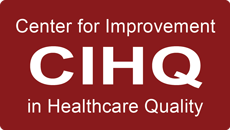
Is your hospital thinking about adding, or has recently added a new site or service? If so, be sure to pause and consider how site / service changes can impact your survey. In our busy lives, organizations sometimes forget to involve the organization’s accreditation leaders when a new site is acquired. Here’s a scenario of how poor communication can negatively impact a hospital’s survey and a few tips to avoid this situation.
After introductions, the lead surveyor begins verifying all sites and services to confirm the accuracy of the hospital’s accrediting organization (AO) application. Yes, reviewing the site list is way more than planning survey logistics and the agenda. In the words of CMS, “surveyors assess the hospital’s compliance with the CMS Conditions of Participation (CoP) for all services, areas and locations in which the provider receives reimbursement for patient care services billed under its provider number.”
Next, the lead surveyor is on the phone with AO headquarters to update your application. Every accrediting organization (AO) with CMS-deeming authority requires timely notification (usually within 30 days) when the hospital has a change in sites and/or services. Your hospital lands its first deficiency cited under governing body / leadership right out of the gate. This is a rough way to start a survey and this situation is completely avoidable with simple communication, but it doesn’t end there.
While you are dusting yourself off, the survey team is considering other potentially missed standards that flew under the organization’s survey readiness radar.
Here’s a few tips to help you avoid additional deficiencies when adding a new site or service.
Infection Prevention & Control (IPC):
- Update the IPC plan. The plan must address all departments, sites, and services and be updated when any significant changes occur, including new sites and services.
- Conduct IPC rounding to identify and remedy any issues. Evaluate the following: Handling of linen; storage and cleaning of equipment and patient areas; sterilization and disinfection procedures and transport (if applicable); hand sanitizer and sink locations; procedures being performed, etc.
- Update the QAPI plan – The plan must be updated annually and must include all departments, sites, and services.
- If the plan is not due for annual review, have ideas in motion. For example, be prepared to discuss performance improvement activities planned for the new site / service.
Medication Management
- Have pharmacy leaders review medication storage areas and observe medication administration practices.
- If sample medications are being dispensed, make certain there is a tracking log and medications are labeled appropriately.
- Evaluate medication preparation areas.
Physical Environment / Equipment / Fire Safety
- Conduct environmental rounding to identify and remedy any issues. Evaluate the following: Chemicals with SDS sheets available; availability and location of eyewash stations (when indicated); monthly inspections of fire extinguishers; make sure extinguishers are not blocked; fire exit plans need to be in place, etc.
- Remember equipment must be inspected before being made available for patient use and routine maintenance activities need to be scheduled.
- Update inventory, maintenance schedules, and inspections for utilities and fire safety.
- Develop and implement emergency procedures, such as the need for crash carts or AEDs.
- Consider how the new site / service will impact emergency preparedness plans.
The final tip – Carefully consider the type of service being offered and the special needs associated with that service. Some off-site departments provide additional specialized risks, e.g., wound care, imaging centers, cancer centers, ambulatory surgery centers, hemodialysis centers, etc. While this list is not meant to be all-inclusive, it is intended to spark communication. Communication and preparation can start your survey off right and present a survey-ready first impression.
References
Centers for Medicare and Medicaid Services. (2020). State Operations Manual, Appendix A – Survey Protocol, Regulations, and Interpretive Guidelines for Hospitals.
Centers for Medicare and Medicaid Services. (2020). State Operations Manual, Appendix A – Survey Protocol, Regulations, and Interpretive Guidelines for Hospitals.
